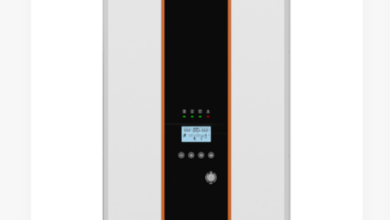Evolution Of stn lcd Technology

Introduction
The display industry has gone through several transformations over the past decades, and one important milestone in this journey is the development of stn lcd technology. Super Twisted Nematic liquid crystal displays, commonly known as stn lcd, became widely used in the 1980s and 1990s, especially in portable electronic devices. While newer technologies like TFT and OLED have gained more popularity, stn lcd still holds relevance in specific applications where cost-efficiency, durability, and readability matter the most.
What Is STN LCD
An stn lcd is a type of liquid crystal display that uses a super twisted nematic arrangement of liquid crystal molecules. Unlike standard twisted nematic (TN) displays, which offer a twist angle of 90 degrees stn lcd panels extend this angle to about 180–270 degrees. This configuration allows for better contrast and improved viewing angles compared to earlier TN displays.
Historical Background
The stn lcd was developed to address limitations found in early LCD technologies. In the 1980s, manufacturers required displays that could show more characters and graphics without consuming too much power. The super twisted nematic approach provided a balance between performance and cost, leading to its widespread adoption in calculators, watches, handheld gaming consoles, and early laptops.
See also: Applications of RGB Laser Module in Modern Technology
Advantages Of STN LCD
One of the reasons why stn lcd remained popular for decades is its unique set of advantages. Some of the key benefits include:
- Lower power consumption compared to CRTs and early TFT panels
- Ability to display more lines and characters, making it useful for data-heavy devices
- Good readability under direct sunlight with reflective or transflective backlighting
- Cost-effectiveness for mass production
These advantages made it a preferred choice for portable devices during its prime era.
Limitations Of STN LCD
While stn lcd provided several improvements over TN technology, it also came with drawbacks. The response time of these displays is slower compared to modern TFT and OLED panels. This results in motion blur when used for fast-moving graphics. Color reproduction is also limited, with many stn lcd panels being monochrome or offering restricted color palettes. Despite these limitations, the technology remains valuable in industries where high refresh rates and full-color accuracy are not critical.
Applications In Modern Times
Even though high-resolution displays dominate the market today, stn lcd continues to be used in many applications. Some industries still rely on this technology for its durability and cost-effectiveness, including:
- Industrial equipment displays
- Medical monitoring devices
- Automotive dashboards and meters
- Point-of-sale terminals
- Household appliances with control screens
These applications prove that stn lcd is far from obsolete and still serves practical needs.
Comparison With Other Display Technologies
When comparing stn lcd with other technologies, it becomes clear why it is still chosen for specific purposes. For example:
- Versus TN LCD: stn lcd offers better contrast and readability.
- Versus TFT LCD: TFT provides better image quality, but at a higher cost and power usage.
- Versus OLED: OLED panels deliver vibrant colors and flexibility, but they are more expensive and have shorter lifespans in certain environments.
Thus, stn lcd remains a middle-ground solution where affordability and efficiency are top priorities.
Market Relevance
Although the consumer electronics market has largely shifted to more advanced displays, the stn lcd market still holds a steady position. Many manufacturers continue to produce these displays for industrial clients who value their reliability. The technology’s long lifecycle and compatibility with simple circuit designs make it a practical choice for companies aiming for stability rather than constant upgrades.
Technological Improvements
Over time, stn lcd technology has also seen improvements. Manufacturers have introduced better backlighting systems, improved color rendering options, and enhanced polarizer materials. These developments extend the usability of stn lcd in modern devices and allow it to compete in niche markets where advanced displays may not be necessary.
Future Outlook
The future of stn lcd is tied to specialized markets rather than mainstream consumer electronics. As industries such as healthcare, automotive, and industrial automation continue to grow, the demand for durable and affordable display solutions will remain. This ensures that stn lcd will continue to hold relevance in the years to come, even if it is overshadowed by more advanced technologies in other areas.
Conclusion
The stn lcd represents a significant step in the history of display technology. While no longer the leading choice for consumer devices, it continues to offer practical benefits in industries that value reliability, cost-efficiency, and readability. Its legacy highlights how innovations evolve and adapt to new demands while still maintaining relevance in certain applications. The role of stn lcd in bridging the gap between early displays and today’s advanced technologies cannot be overlooked.



